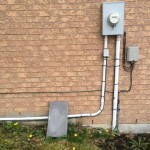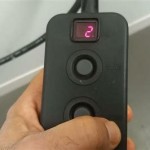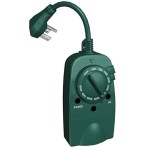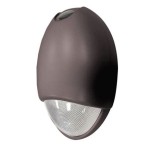Essential Aspects of PIR Lights Outdoor Instructions
Outdoor PIR (Passive Infrared) lights are an effective way to enhance security and illumination around your property. Understanding the proper installation and operation of these lights is crucial for optimizing their functionality. This comprehensive guide will delve into the essential aspects of PIR lights outdoor instructions, ensuring you have a well-lit and secure outdoor space.
Choose the Right Location
The placement of your PIR lights is vital for effective motion detection. Ideal locations include:
- Doorways and entrances
- Garage areas and driveways
- Patios and decks li>Along walkways and paths
Set the Correct Height
Optimal mounting height for PIR lights varies depending on the model and coverage area. Typically, a height of 6-8 feet is recommended for residential applications. This ensures the sensor can detect motion at an appropriate distance without being too easily obstructed.
Adjusting Sensitivity and Detection Range
PIR lights have adjustable sensitivity and detection range settings. The sensitivity controls how much infrared radiation is required to trigger the light. A higher sensitivity setting increases the likelihood of detection but may result in false alarms. The detection range determines the distance at which motion is detected. Adjust both settings based on your specific needs and the surrounding environment.
Connecting to Power
Proper electrical connections are crucial for safe and reliable operation of PIR lights. Follow these steps:
- Turn off the circuit breaker or fuse.
- Connect the black wire from the light to the black wire from the power source.
- Connect the white wire from the light to the white wire from the power source.
- Connect the ground wire from the light to the ground wire from the power source.
- Tighten all connections securely and turn on the power.
Test and Maintenance
Once your PIR lights are installed, test their functionality by walking around the detection area. Make adjustments to the sensitivity and detection range as needed. Perform regular maintenance to ensure they continue to operate effectively. This includes cleaning the sensor lens, checking connections, and replacing batteries if necessary.
Types of PIR Lights Outdoor
PIR lights come in various types, each with its own features and applications:
- Wall-mounted PIR lights: Fixed to walls, ideal for illuminating doorways and walkways.
- Floodlight PIR lights: Powerful lights that provide wide coverage areas, suitable for driveways and parking lots.
- Motion-sensing security lights: Integrate PIR sensors with security cameras, offering enhanced surveillance.
- Solar-powered PIR lights: Utilize sunlight to charge, ideal for areas without access to electricity.
Conclusion
By following these comprehensive instructions, you can effectively install and operate PIR lights outdoor to enhance the security and illumination of your property. Proper placement, adjustment, and maintenance ensure optimal performance. Remember to choose the right type of PIR light based on your specific needs and enjoy a well-lit and secure outdoor space.

Stainless Steel Outdoor Wall Up Down Pir Light Manual Override

How To Adjust Your Sensor Light Metro Electrical 24 Hour Electricians

Lepro 20w Security Lights Outdoor Motion Sensor 1700 Lumen Pir Light Ip65 Waterproof Flood

Onforu Bdd100g 3 Pir Led Wall Lights With Motion Sensor User Guide

Motion Sensor Lights Tips To Reset Detector

Outdoor 360 Degree Corner Mounted Pir With Single Sensor Led Hut

Auraglow Pir Motion Sensor Stainless Steel Up Down Outdoor Wall Security Light Warminster Black Led Lighting

How To Reset Outdoor Motion Sensor Lights Electronicshub

Auraglow Pir Motion Sensor Up Down Outdoor Wall Security Light Warminster Stainless Steel Led Lighting

Contesa Pir Wall Light Stainless Steel Motion Sensor
Related Posts







